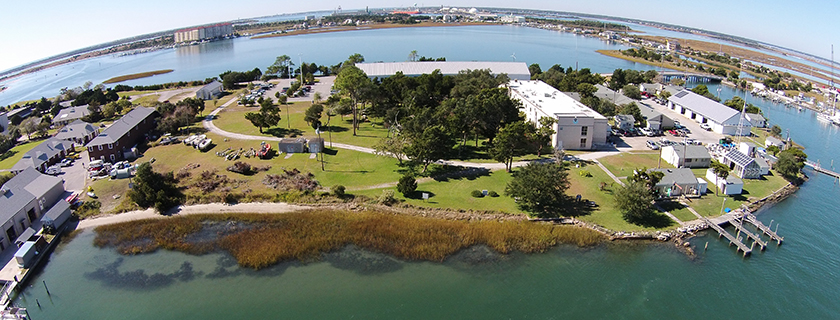We are summarizing existing information on how actions working with nature to meet society’s and nature’s needs, called nature-based solutions (NBS), help boost coastal resilience. We aim to collate global evidence from primary literature since 1980 on the performance of NBS for coastal protection in salt marsh, shellfish reef, coral reef, kelp, seagrass, and mangrove ecosystems. Synthesis findings will highlight the current state of knowledge on and help guide future use of NBS to best protect coastal communities and infrastructure.
Why We Care
Impacts from human activities and climate change threaten the capacity of ecosystems to protect coastal communities from hazards like flooding and erosion. Human interventions aim to buffer or overcome these threats by providing physical protection for existing coastal infrastructure and communities. These interventions, which involve working with nature to achieve societal, biodiversity, and resilience benefits, are referred to as nature-based solutions (NBS). NBS for coastal protection include habitat restoration and creation, structure addition (artificial or natural), retrofitting gray infrastructure, or modifying morphology or sediment. Despite the popularity of NBS for coastal protection, gaps remain in our understanding of whether such interventions perform as intended.

A living shoreline, composed of marsh and oyster reef, protects the NCCOS lab on Pivers Island in Beaufort, North Carolina. Credit: NOAA.
What We Are Doing
To help fill these knowledge gaps, we are synthesizing existing evidence from primary literature since 1980 on how NBS for coastal protection perform across a suite of ecological, physical, social, and economic outcomes. Our state of the science assessment focuses on six coastal ecosystems: salt marsh, shellfish reef, coral reef, seagrass, mangrove, and kelp.
We are creating an inventory of knowledge, “mapping” what is known and identifying information gaps. We are using a method called “systematic mapping,” which is a technique that summarizes the distribution and abundance of evidence (e.g., published data or findings on a topic) from primary and secondary literature.
The project team includes scientists from the NOAA Central Library, NOAA Office for Coastal Management, Duke University, North Carolina State University, and East Carolina University.
Benefits of Our Work
This project will highlight the state of knowledge on NBS performance and illuminate gaps in our understanding of NBS for coastal protection. It will help answer the following questions:
-
- What coastal protection services, like reducing shoreline erosion and attenuating wave energy, do NBS intend to achieve?
- How does the evidence base on NBS performance differ across ecological, physical, social, and economic sectors?
- How does the evidence base on NBS performance differ by ecosystem type, geographic location, and the type of NBS intervention?
- What methods and metrics are used to assess NBS performance, and when are performance assessments conducted relative to NBS implementation?
Next Steps
- Develop a protocol — which is a “recipe” for the evidence synthesis — outlining the search strategy, data sources, and data extraction. The protocol will be published as a peer-reviewed journal article.
- Implement the synthesis protocol to discover evidence on NBS performance stemming from peer-reviewed publications and gray literature from 1980 through the present.
- Develop a database of evidence on NBS performance.
- Synthesize evidence to identify knowledge clusters and knowledge gaps. Findings will be published as a peer-reviewed journal article.
 Official websites use .gov
A .gov website belongs to an official government organization in the United States.
Official websites use .gov
A .gov website belongs to an official government organization in the United States. Secure .gov websites use HTTPS
A lock or https:// means you’ve safely connected to the .gov website. Share sensitive information only on official, secure websites.
Secure .gov websites use HTTPS
A lock or https:// means you’ve safely connected to the .gov website. Share sensitive information only on official, secure websites.